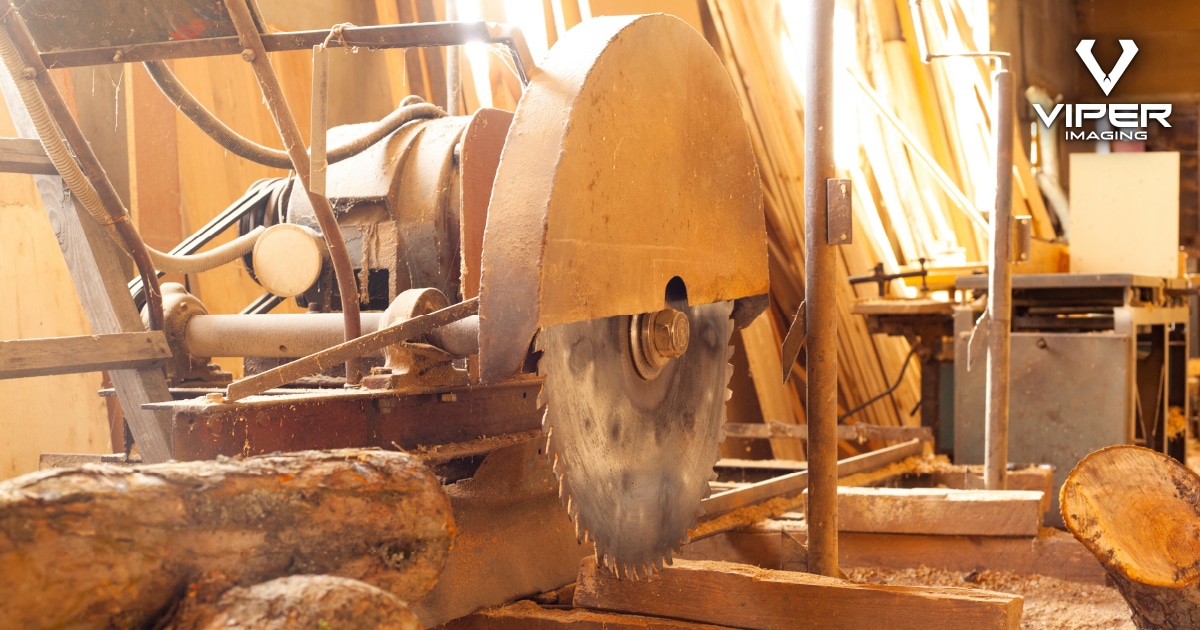
The lumber and wood processing sector plays a critical role in the larger forestry industry. Made up of businesses involved in harvesting, processing, and manufacturing wood and wood-derived products, the global market is expected to more than double to $1.5 trillion by 2033.
In the US, the sector includes around 10,500 businesses ranging from sawmills and planing mills to engineered wood manufacturers, wood product manufacturers, and other specialty facilities.
Given the presence of flammable materials, heavy equipment, heat, and sparks, the industry is highly vulnerable to the catastrophic damage that can result from fire. Most facilities have already implemented a range of fire detection and suppression systems to help minimize the impact, but these reactive solutions only trigger when a fire has already started.
To mitigate the risk of fire before ignition, lumber and wood processing facilities need to take a proactive approach to fire detection and prevention.
To see how lumber and wood processing facilities can implement Continuous Thermal Monitoring solutions, download our recent white paper: Mitigating the Risk of Fires – Why Lumber and Wood Processing Facilities Need Continuous Thermal Monitoring.
Understanding the Lumber and Wood Processing Sector
Compared to other industries, the lumber and wood processing sector is highly cyclical and heavily impacted by wider economic trends. High fixed costs associated with capital-intensive equipment, growing labor costs, and ongoing maintenance requirements mean that firms must maintain high production levels simply to cover expenses.
At the same time, the industry still relies heavily on manual processes and skilled workers. High turnover rates, an aging and retiring workforce, and increased competition for workers from other industries have all made it difficult for companies to fill positions and bring in the skills they need to grow in the future.
Recognizing these trends, companies are increasingly turning to advances in technologies such as the Industrial Internet of Things, big data analytics, automation, artificial intelligence and machine learning, and robotics. Though the sector has been somewhat slow to adopt these technologies, especially when compared to other manufacturing segments, there is growing awareness of the potential for technology to make facilities more productive, efficient, and profitable.
The High Costs of Being Reactive to Fires
Fire is a well-known risk, and it is one that the lumber and wood processing industry takes seriously.
Most warehouses, storage areas, and processing facilities are already equipped with fire systems. Smoke, flame, and spark detectors alert to the presence of fire while sprinklers, water mist, foam, and other suppression systems slow the spread of flames until authorities arrive.
These systems are necessary for both safety and compliance. But they all share a common limitation – they are inherently reactive solutions that trigger only when a fire has already started.
To further mitigate risk, companies also rely on workers to inspect and maintain equipment, check for hotspots, and clear flammable dust and debris. However, these are time and location-dependent strategies that depend on the availability of well-trained personnel, meaning it can be difficult to conduct these risk mitigation measures frequently enough.
The true costs of an undetected fire go well beyond the initial structural damage. Companies incur significant costs repairing and replacing equipment, rebuilding structures, replenishing inventories, and restoring operations.
Additionally, every minute of downtime disrupts operations and results in lost productivity. For an industry that requires high equipment utilization rates to be profitable, any extended downtime, especially during periods of high demand, can be devastating.
Finally, a fire can make it difficult for companies to access funding, invest in capital projects, or deploy new performance improvement initiatives over the long term. Insurance claims also negatively impact a facility’s risk profile, leading to higher premiums, additional exclusions, increased deductibles, and more difficulty securing adequate coverage.
A Proactive Approach to Fire Prevention
Just as lumber and wood processing facilities are embracing technology to improve their operations, many are now looking to technology to take a more proactive approach to fire detection and prevention.
Continuous Thermal Monitoring solutions provide 24/7 coverage of critical equipment and high-risk areas. They monitor the conditions needed for fire rather than the presence of fire itself. This allows facilities to proactively address potential fire risks such as hotspots, overheating assets, residual heat, or other hazards and take action to prevent ignition.
The versatile solution can be configured and deployed for a variety of applications in all areas of the facility, allowing Operators to improve safety, enhance operations, and mitigate the risk of catastrophic fire. To see how you can benefit from Continuous Thermal Monitoring solutions, download the white paper:
